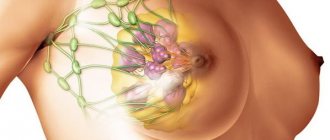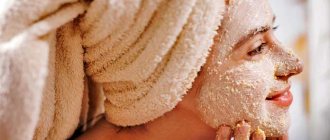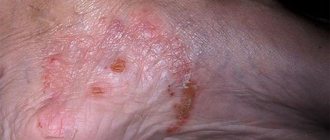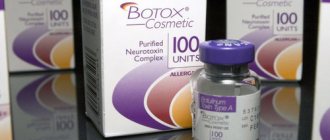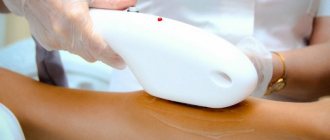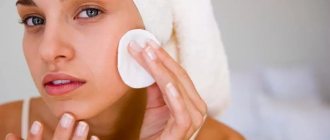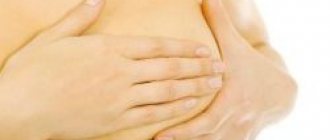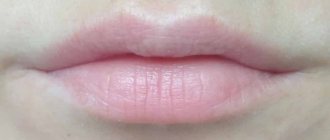To support the trend towards naturalness and create a current natural eyebrow make-up, just make a couple of passes through the hairs with a comb-brush and apply a fixing gel. But even this simple manipulation turns into an almost impossible task if the skin on the eyebrows peels off. We'll tell you where peeling comes from, whether it can be eliminated and how to do it.
Signs of peeling skin on the face
First of all, peeling appears due to a lack of skin hydration and a decrease in NMF (Natural Moisturizing Factor) - a natural moisturizing factor consisting of molecules and other components of the intercellular fluid that are responsible for moisturizing and retaining moisture in the skin. The destruction of the natural protective lipid layer leads to transepidermal loss of moisture from cells and intense dehydration of the epidermis.
There can be many reasons for the occurrence of peeling: from genetically determined dry skin type to hypovitaminosis. With insufficient hydration, the skin quickly loses tone, strength and freshness, the synthesis of natural hyaluronic acid and collagen decreases, and the aging process of cells accelerates.
Desquamation of the skin is often accompanied by a number of associated symptoms that cause discomfort:
- Dehydrated cells do not have time to regenerate, accumulate on top of each other in layers and peel off from the scalp. This causes the appearance of white flakes, thickening of the stratum corneum of the epidermis, the appearance of dehydration creases and a grayish tint to the face.
- Protective functions decrease, pH decreases, the skin becomes more vulnerable to external negative influences;
- There is a feeling of skin tightness, sometimes itching and irritation.
- The sensitivity of the epidermis increases; against the background of peeling, an allergic reaction or exacerbation of acne often occurs (with oily problem skin types).
- Dry and dehydrated skin loses its sensitivity to active formulas of cosmetics for care, and the ability of cells to absorb nutrients decreases.
Severe peeling also makes it impossible to apply even, neat makeup - decorative cosmetics roll off with particles of dead cells, creating a mask effect.
Reasons for appearance
To begin successful treatment, it is important to find out the causes of symptoms. Most likely, the flakes are caused by seborrheic dermatitis. Factors influencing its development:
- puberty, hormonal disorders;
- lack of vitamins;
- dysbacteriosis;
- improper diet;
- metabolic disorders;
- overwork;
- problems with the digestive system;
- abuse of hot, spicy, fatty and salty foods.
Peeling can also be caused by stress, climate change, emotional turmoil, HIV, exposure to ultraviolet radiation, coloring compounds, and inappropriate cosmetics.
Depilation or, conversely, leaving behind excess hairs can also lead to similar troubles. The reason may lie in heredity, diseases of internal organs, or unfavorable environmental conditions.
These factors contribute to the proliferation of the fungus, which under normal conditions, living on the skin, does not have a negative effect. The rapid spread of microbes is helped by the activation of the sebaceous glands. In these cases, the skin itches and a burning sensation occurs.
Consequences of severe peeling of the skin
If measures are not taken in time and the skin is not provided with the necessary care aimed at moisturizing and softening the epidermis, its condition may worsen.
- Firstly
, dehydration is the main reason for the accelerated aging process of the skin: with insufficient hydration, the synthesis of collagen and elastin decreases, the skin loses its ability to quickly regenerate, facial wrinkles become more noticeable, lines of dehydration appear, the skin loses firmness and elasticity, and loses its natural radiance. The image looks tired, even if you get enough sleep. - Secondly
, peeling also causes clogged pores and leads to acne. Oily skin often suffers from dehydration and flakes; dead skin scales mix with sebum and fill enlarged pores, providing an ideal environment for the proliferation of acne bacteria. - Thirdly
, dry flaky skin is characterized by increased reactivity and susceptibility to the environment. When protective functions are impaired, the skin often reacts with allergies, hypersensitivity, itching and irritation. Without sufficient care, microcracks may appear on the skin, accompanied by pain and discomfort.
There are two ways to improve your complexion, make it fresher, lighter and more uniform - by cleansing the stratum corneum of the epidermis and increasing the moisture content in it.
Transmission routes
There are many ways to become infected with fungal diseases. Most often this happens:
- in direct contact with the affected areas of the skin of another person;
- when sharing towels, slippers, personal hygiene items;
- through a contaminated manicure instrument;
- through contaminated clothing and shoes;
- through the soil, especially in the presence of skin microtraumas;
- in contact with pets.
Often, skin mycoses develop in people who visit swimming pools, saunas, showers at sports clubs, etc. Infection is more likely the worse the person’s immune system works.
Why does the skin on my face peel?
Due to the reduced supply of water and glycerol from the dermis to the epidermis and insufficient synthesis of the filaggrin protein, 20% of people have a genetic predisposition to dehydration and flaking of the skin.
In addition to genetics, among the factors of skin peeling there are external and internal.
External factors
- Prolonged stay in a room with dry air (due to the operation of air conditioners or heating devices).
- Incorrectly selected care for your skin type or too aggressive formulas of cosmetics.
- Neglect of moisturizing - remember that skin of any type and at any age needs to be moisturized regularly.
- Temperature changes: in summer, the epidermis becomes dehydrated and can get sunburned without protection from ultraviolet rays. In winter, due to strong winds and extremely low temperatures, the skin's hydrolipidic barrier is disrupted and dehydration appears.
- Excessive exfoliation (over-cleansing with peelings, scrubs) or insufficient facial skin care after the cleansing procedure. Exfoliate your skin no more than 2 times a week (depending on its type and condition - sensitive and thin skin requires deep cleansing no more than once every 7-10 days).
- Using decorative cosmetics with dry textures.
Internal factors
- Tendency to allergic reactions.
- Hypovitaminosis (lack of vitamins and minerals) in the body is also the cause of tissue dryness and flaking.
- Some diseases, for example, the endocrine system or gastrointestinal tract.
If skin peeling appears unexpectedly, against the background of stable usual care and regimen, then to find out the cause of dehydration, it is recommended to consult a specialist.
Diagnostics
In case of hair damage, diagnostic measures are carried out by a trichologist. To determine the cause of the disease, patients are referred for consultations to a neurologist, gastroenterologist, immunologist and other specialists. Patients with skin diseases are examined by a dermatologist. The list of additional techniques for itching of the scalp may include the following procedures:
- Examination of the scalp.
In most cases, it allows you to determine hair disease. It is the main method of examination for pediculosis; it makes it possible to identify excoriations, typical macules and papules. Combing the hair onto a piece of paper confirms the presence of mobile parasites. - Dermatoscopy.
With trichological pathologies, dandruff, irritation, inflammation, excess sebum, and hyperkeratosis can be detected. In patients with microsporia, mycelial threads and changes characteristic of a fungal infection are determined. - Other hardware methods.
If head lice is suspected, in doubtful cases, the hair is examined using a Wood's lamp to visualize fluorescent nits. Luminescent testing is used for the rapid diagnosis of microsporia and to exclude infection of contact persons, due to the characteristic green glow of the mycelium. - Lab tests.
Scraping microscopy is the main method used to confirm demodicosis. It is informative for microsporia, but does not allow to differentiate this pathology from trichophytosis. If it is necessary to clarify the diagnosis and select more effective drugs, culture is performed on nutrient media.
Causes of peeling in women and men
In addition to the listed general causes of peeling, there are exclusively “female” and “male” factors of dehydration of the epidermis.
Peeling facial skin in women
- With the onset of menopause (45+ years), a woman’s body undergoes many changes, one of them is the loss of the skin’s natural ability to produce lipids (fats). Since the onset of menopause, a woman’s skin loses up to 57% of lipids, resulting in dryness, itching, flaking and a feeling of skin tightness.
- Incorrect care: aggressive formulas containing alcohol, excessive cleansing, insufficient moisturizing, or completely incorrectly selected products for your skin type.
- Overuse of mineral powder (mattifying formulas) can also cause skin desquamation: absorbent mineral particles further dry out the skin.
- Frequent uncontrolled diets and unbalanced nutrition are all features of eating behavior that can cause deterioration of the condition of the epidermis from the inside.
Peeling facial skin in men
- Regular shaving of stubble: a feature of the male half, which also causes dry skin. No matter how dense the male epidermis may be, due to insufficient care and frequent shaving, the skin becomes sensitive, flaking, itching, inflammation and rashes appear: the razor blade partially removes the most superficial layer of cells.
- Lack of sufficient facial skin care: even if a man refuses day and night care, then pre- and after-shave care should be a must-have in his beauty arsenal.
Traditional methods of combating peeling
The problem of dandruff that forms in the eyebrows has long been known, so in folk medicine there are many recipes to combat the disease. In particular, it is proposed to use:
- Vaseline, linseed, castor, camphor oils;
- tea tree oil, which is famous for its antiseptic properties;
- baby creams;
- herbal infusions with St. John's wort, string, aralia, burdock - it is suggested to drink infusions or wipe the affected areas with them.
Traditional methods of treatment should be treated with caution. What is good for nourishing healthy skin is not always good for peeling and inflammation. Be sure to consult your doctor.
What to do to get rid of constant peeling of facial skin?
If you experience peeling, timely measures will help your skin recover.
- First, follow the drinking regime and consume the daily amount of plain water. Lack of fluid in the body causes tissue dehydration and peeling.
- Secondly, provide yourself with the necessary air humidification: normally, the humidity in the room should be at least 60% humidity.
- Thirdly, provide your skin with sufficient care aimed at: gentle cleansing, moisturizing, softening, restoring and protecting the skin.
What skin changes occur in adulthood?
Peeling skin on the forehead is more often a problem for women than men. One of the reasons for peeling skin lies in the fact that the structure of a woman’s internal body changes, and, as mentioned above, changes occur. There is only one conclusion: you need to take care of your skin from adolescence. Perhaps this way you can avoid a number of reasons why problems with the skin on the forehead arise, and not only.
If you use cosmetics correctly, you can avoid a lot of discomfort on your face. This means that you first need to learn how to use scrubs and lotions. If you do everything at random and do not follow the rules, this can lead to the following problems:
- Peeling of forehead skin.
- Hyperemic areas of skin appear on the face. This indicates that some cosmetic product was carefully rubbed into the face.
- Peeling may go away, but for a short period, after a while it appears again.
One of the factors may be that you use low-quality cosmetics. In this case, try replacing it. If this does not help, then it is best to contact a dermatologist so that he can help identify the cause of the problem in the early stages.
Cosmetics for home care against flaking skin
Let's look at the mandatory stages of a beauty routine for caring for dehydrated, flaky skin and consider options for effective cosmetics to combat the current problem.
Cleansing
- Wash and shower in warm water: hot water disrupts the natural hydrolipidic film of the skin and causes peeling. After washing, gently pat your face dry with a towel, avoiding pulling or rubbing movements.
- During the procedure, use soft cleansers with delicate, gentle formulas, for example, Lipikar Syndet AP+ lipid-restoring cleansing cream-gel for face and body
, which instantly softens and soothes dry sensitive skin of the face and body. - An alternative way to cleanse the skin is micellar water Micellar water ULTRA Reactive
is suitable for allergic hypersensitive skin, thoroughly cleanses the skin of impurities without water, removes makeup from the eye area, reduces redness and a feeling of tightness, soothes and moisturizes the skin. - No more than 1-2 times a week, use delicate peeling to exfoliate dead skin flakes and accelerate cell regeneration; La Roche-Posay soft scrub
, gently exfoliating, cleansing and smoothing the skin.
Cleansing – preparing the skin for procedures involving the application of cream or serum. After cleansing your skin, be sure to use a moisturizer or emollient that will prevent tightness and re-flaking.
Corrective care
Mask
Helps quickly and permanently prevent transepidermal moisture loss from deep layers of skin. The mask is used 1-2 times a week (unless otherwise provided by the manufacturer) and provides visible results after just 1 application.
- Hydraphase Intense Masque, an intensely moisturizing and soothing mask
for dehydrated facial skin, contains liquid paraffin, fragmented hyaluronic acid, shea butter and La Roche-Posay thermal water. Intensively moisturizes, strengthens, restores skin comfort and elasticity, improves complexion, restores smoothness and softness to the skin.
HYDRAPHASE INTENSE MASQUE
Soothing mask
Gel-cream texture. Suitable for all skin types, including those with signs of dehydration.
RUB 1,643 more details
Serum
– highly concentrated cosmetic product with highly targeted action. Can act as independent care or prepare the skin for further procedures. Active formulas with powerful hydrofixing agents will help the skin remain moisturized for a long time and prevent flaking.
- Concentrated moisturizing serum Hyalu B5
with pure hyaluronic acid (low and high molecular weight), medecassoside, vitamin B5 and La Roche-Posay thermal water. Instantly moisturizes, soothes, accelerates skin barrier restoration processes, stimulates collagen synthesis, restores the intercellular matrix of the skin, increases density and elasticity, and helps reduce wrinkles.
HYALU B5
Moisturizing serum
Increases skin tone and elasticity, gives the skin a healthy and fresh look.
RUB 2,708 more details
Cream
– when choosing a product, pay attention to its ability to restore the natural protective functions of the skin – the higher it is, the better. By restoring the hydrolipid mantle, you will prevent the recurrence of dehydration. Choose nourishing creams based on fatty acids for dry and sensitive skin.
- Cicaplast Gel B5
is a treatment that accelerates the restoration of the skin barrier with softening vitamin B5, antibacterial copper, zinc, manganese, regenerating malecassoside and hyaluronic acid. Suitable as care after deep cleansing and exfoliation of the skin, preventing re-dryness and peeling.
CICAPLAST GEL B5
Restoring the skin barrier
For irritated skin after aesthetic procedures (peeling, laser, suture removal).
874 rub. more details
A moisturizer should be a staple in your facial skin care arsenal. Pay attention to the composition of cosmetics: the formula of your basic care must include intensive moisturizers and hydrofixing agents.
- Toleriane Senstive Riche
is a moisturizing cream for sensitive skin prone to dryness. It has a rich and enveloping texture, instantly soothes the skin, making it soft and tender, protects against dryness and flaking.
TOLERIANE SENSITIVE RICHE
Moisturizing care
Moisturizes, soothes, enhances the natural protective function of the skin.
RUB 1,058 more details
Treatment
Conservative therapy is required, including medicinal and non-medicinal measures. Patients with hair diseases are advised to limit the amount of sweet, fatty and spicy foods in the diet, and add enough vitamin-rich foods to the menu. You should avoid using aggressive shampoos, blow-drying, dyeing, and using sharp-toothed combs. The list of treatment procedures for itchy scalp depends on the characteristics of dermatological or trichological pathology:
- Seborrhea and seborrheic dermatitis.
Preparations with tar and zinc are recommended; in severe cases, keratolytic agents are recommended. Tightly fitting scales are softened with petroleum jelly, removed, and then medications with an antifungal effect are applied. If these methods are ineffective, hormone-containing ointments are included in the treatment regimen. Darsonvalization and cryomassage are useful. - Pediculosis.
To combat lice, shampoos and lotions with pyretoids and organophosphorus compounds are used. If there is no result, lotions with benzyl benzoate or polydimethylsiloxanes are prescribed. Essential oils are effective in removing adult lice and nymphs, but they do not have the desired effect on nits. - Microsporia.
General and local antifungal therapy is used. Emulsions, ointments and creams, and special sprays are applied to the scalp. In case of severe inflammation, combined agents with hormonal and antifungal components are prescribed. If a secondary infection occurs, medications with an antibacterial effect are required. - Demodecosis.
Special ether and alcohol talkers and local antimicrobial agents are recommended. Comprehensive measures are needed to restore the protective properties of the skin.
Salon treatments against skin peeling
Visible results in a relatively short time can be achieved through a course of aesthetic cosmetic procedures, for example:
- Biorevitalization is the injection of hyaluronic acid-based preparations into the upper layer of the skin.
- Peeling with lactic acid - superficial exfoliation of the stratum corneum, moisturizing and restoring skin tone.
Remember that after salon treatments, the skin needs sufficient supportive care to preserve and maintain the positive effect.
Proper nutrition for facial psoriasis?
There is no special diet for this disease. But all dermatologists note that its course largely depends on nutrition. It is recommended to exclude from the diet salty, spicy, sour foods, as well as high-calorie foods - meat, sweets and baked goods. Alcoholic drinks should be completely excluded, strong tea, coffee, cocoa should be limited. It is believed that limiting protein foods contributes to recovery.
It is recommended to eat more fruits, fresh and stewed vegetables. Freshly squeezed juices, unsweetened compotes, and fruit drinks are useful. You need to drink up to 5 - 6 glasses of liquid per day


